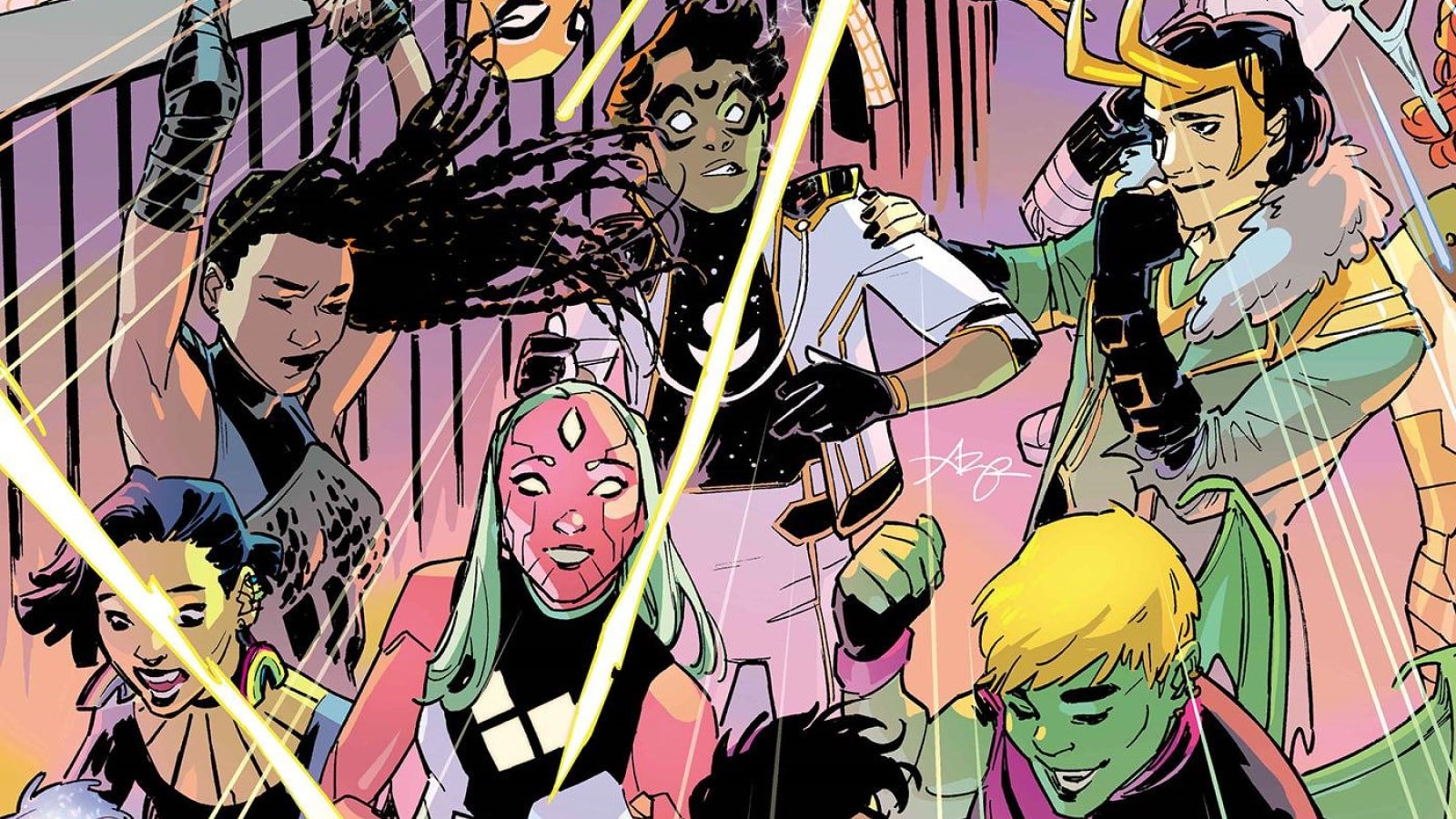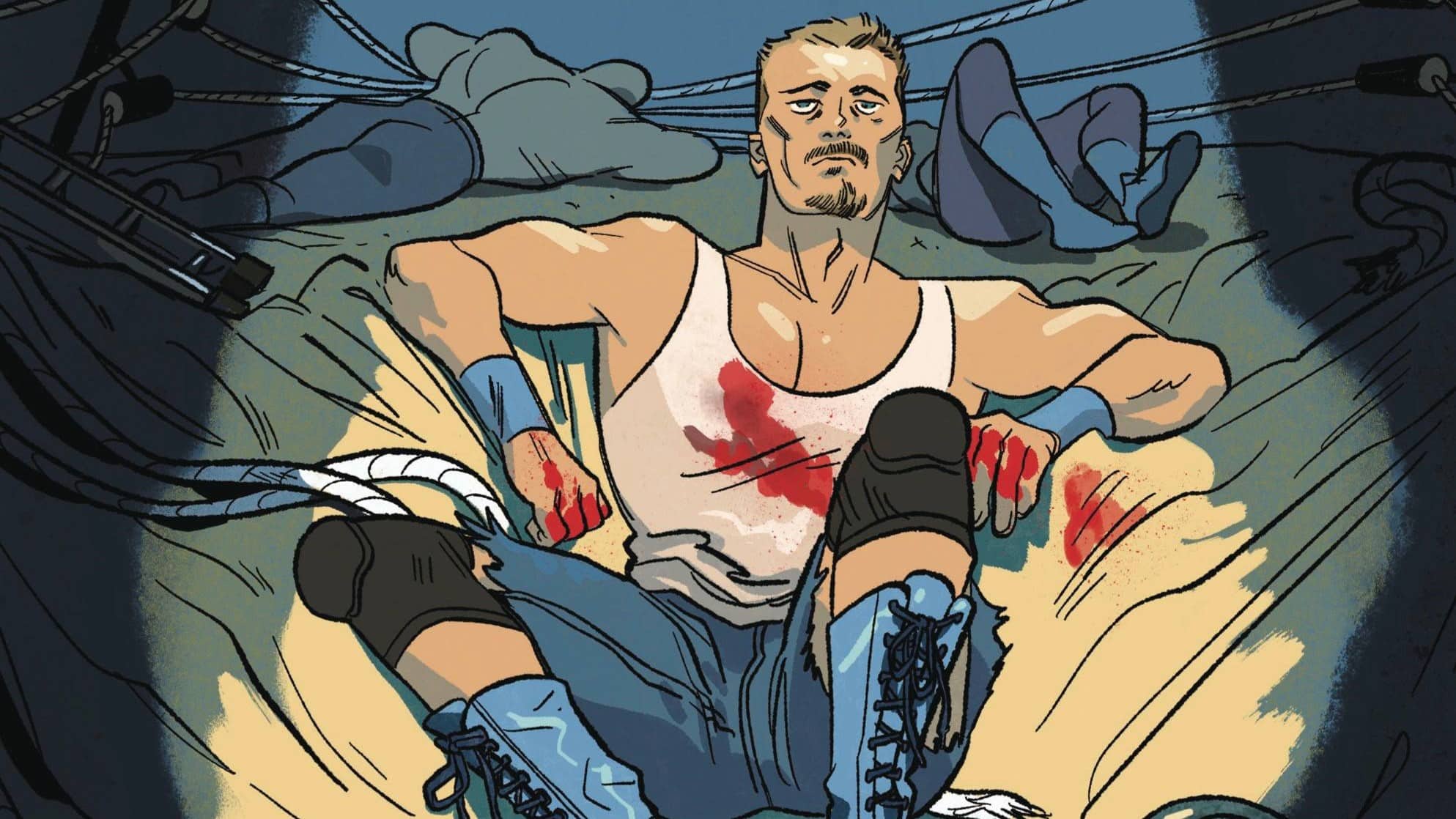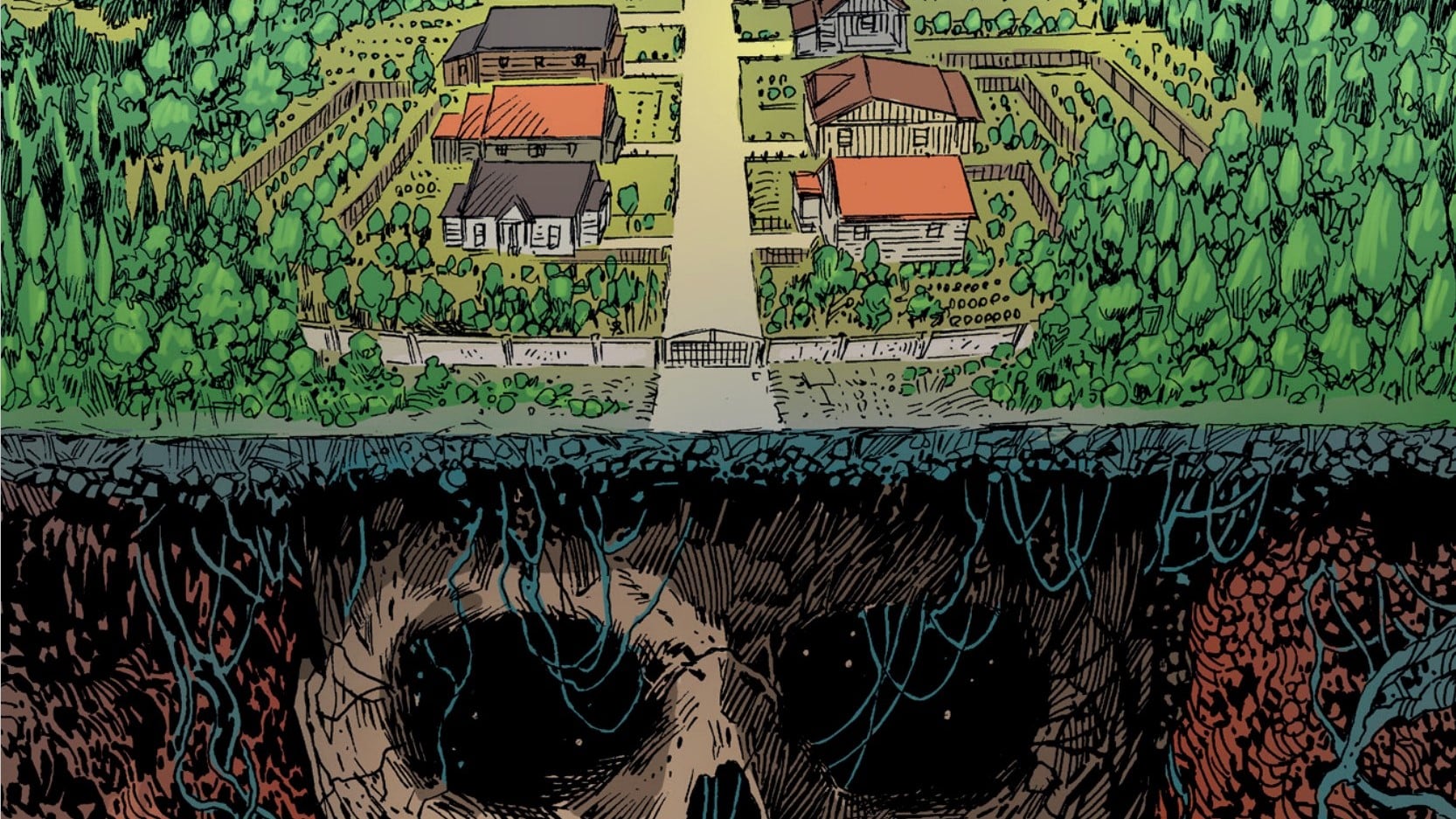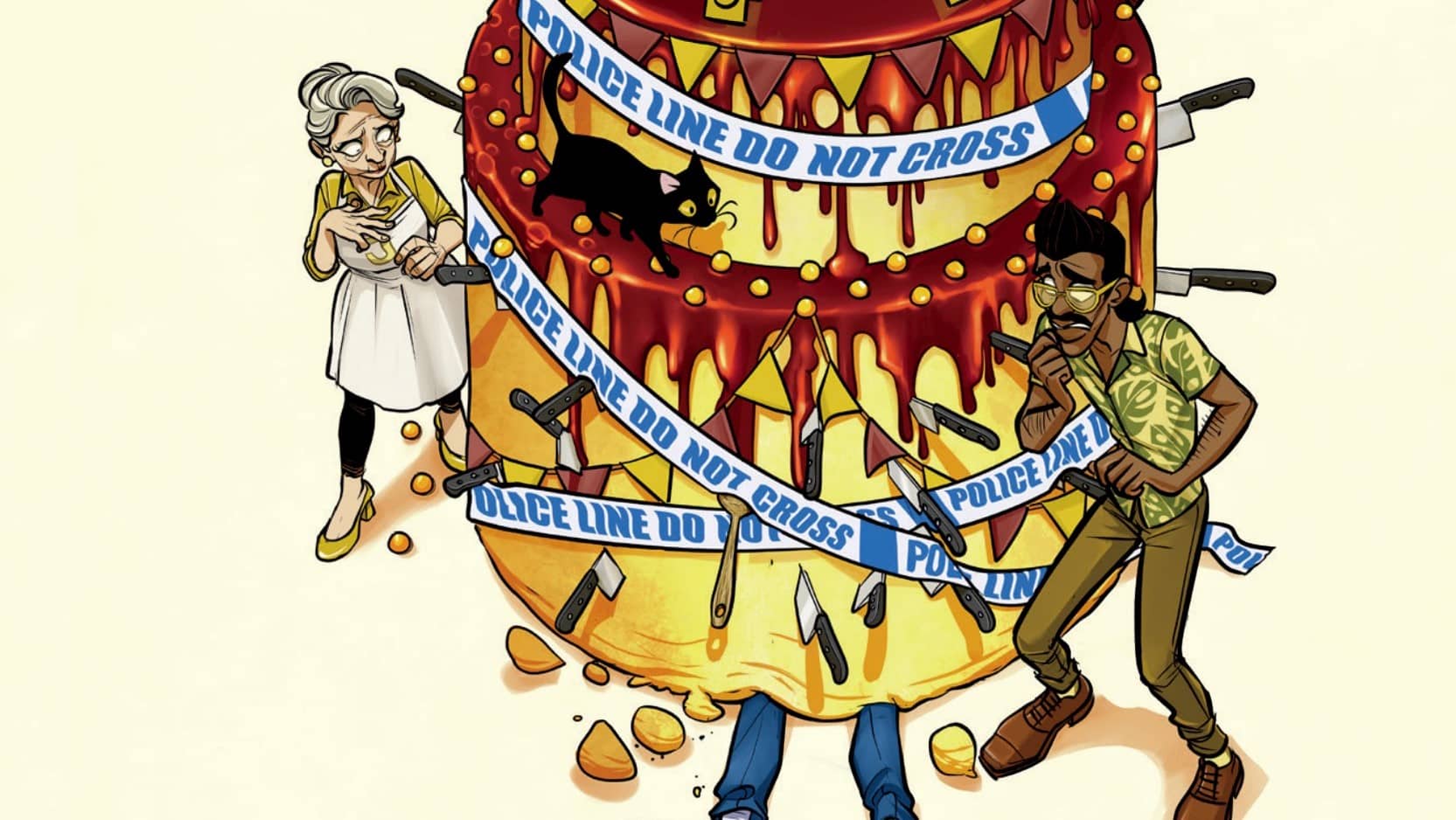Mags Immortal is a spinoff of Times Immortal, where Robert Secundus and Zach Rabiroff dive into the weird and wild world of 1970s Marvel Magazines.
CW: violence, implied sexual violence, incest, suicide, torture, and religious trauma
Robert Secundus: The other day, while doing research (read: justifying spending money on weird comics stuff on ebay), I stumbled across something absolutely bizarre, horrifying, and delightful: Marvel Comics’ Haunt of Horror vol 2. #3. This was like stumbling, in the middle of a dark wood, upon some gigantic gate saying “don’t go in here; bad stuff ahead; no hope etc etc.” And I had proceeded, I’m sure I would have been lost; thankfully, I found a Virgil for my Marvel Magazine Journey, and we decided to share that journey with you all during this time without new Marvel Comics. Zachary, my friend, my co-writer, my guide: what is Haunt of Horror? What are these strange magazines?
Zach Rabiroff: Robert, my fellow sojourner into the depths, these magazines are a window into the uncanny, a portal into a realm unseen by man, untouched by God. More specifically, though, they’re a relic of a very weird and totally fascinating period for Marvel comics. The early to mid-’70’s were an odd period for the comic industry as a whole. The Baby Boomers were aging, and the broad readership of comics in the 1960’s was contracting — a process not helped by the virtual retirement of Stan Lee from the titles he had been spearheading at Marvel. Clearly some fresh ideas were needed, and into this chasm stepped young, edgy publishers like Warren and Eerie, publishing pulpy, schlocky, gleefully off-putting titles that capitalized on the exploitation genres of the new decade.
Trouble was, Comics Code-approved Marvel couldn’t easily compete on this new playing field (though the explosion of horror books like Tomb of Dracula and Werewolf by Night show that they certainly tried). Thus, the Marvel magazine line was an attempt to join the ranks of uncensored pulp publishing. A freewheeling combination of black-and-white comics (invariably peppered with a soupcon of prurient softcore nudity and violence), prose fiction, interviews, and journalism, they were totally unlike the buttoned-down superhero fare we usually associate with mainstream comics publishing. And that brings us to 1974’s Haunt of Horror #3, with its cover painting of flesh-eating SWAMP STALKERS advertising the intriguing contents therein. Shall we dig into the, uh, flesh-meat of it all?
RS: So, I think we should begin at the place most familiar– the five horror comics included in Haunt of Horror #3. The first, and longest, is “GABRIEL: THE HOUSE OF BRIMSTONE,” scripted by Doug Moench, with art by Billy Graham, Pablo Marcos, Frank Giacoia, and Mike Esposito. It’s the second entry in the ongoing Gabriel: DEVIL HUNTER serial. It begins with an introduction: “GABRIEL. Named for the Archangel of Heaven. A man snared deeply in the eternal war between Heaven and Hell, forced to battle Satan on Satan’s terms.” Gabriel is an ex-priest who once upon a time was possessed, performed an exorcism on himself, and was permanently scarred with a cross on his chest as a result. Now he’s a freelance exorcist. In this story, Veronica Miller, daughter of the renowned demonologist Dr. Craig Miller, becomes possessed, and the scholar calls upon Gabriel and his psychic assistant Desadia for aid. They do eventually triumph over the evil, not just exorcising but killing the demon, though only by the sacrifice of Dr. Miller.
RS: So, Zach, this is the first thing in the magazine, and this was my first marvel horror magazine, and it was an intense introduction. There is a naked possessed lady demanding incest on the third page of this story.
ZR: There sure is, Rob. There sure is. You know, a lot of times, we talk about the psychosexual subtext underneath a lot of ‘70’s and ‘80’s Marvel stuff (think of the number of spiked collars and body swapping in every Chris Claremont story under the sun, for example). And in a lot of ways, a serial like Gabriel: DEVIL HUNTER is just that subtext made text in the most overt way possible. The story is wilfully, deliberately uncomfortable, in a way that challenges the reader to keep going. It exposes the hidden id of the characters, the writer, and the reader all at once, and the result is something that even non-religious audiences at a four-decade distance are likely to find genuinely horrific. I know I did, at least.
Take the character of Craig Miller, for instance. Even though it’s the possessed Veronica (or, rather, the demonic inhabitant therein) who demands unholy relations with her father, the clear implication of the story is that the hidden desire for incest has permeated this household long before the Devil ever brought it to the surface. That’s ultimately why Dr. Miller’s story can only end with suicide, and why Gabriel’s mission is doomed to failure before he even arrives. And I think what we’re meant to take away from this — whether or not Doug Moench was consciously aware of it — is that this is what the Devil does: merely turns the repressed id into overt ego. It’s a very Freudian version of demonic possession, and whether or not it’s theologically sound, I can’t deny that it’s uncomfortable as hell.
RS: I want to build on that idea of the Freudian possession for a moment, bringing in something we saw elsewhere in this magazine (as we’ll see soon!), a (theologically sound) notion from William Peter Blatty’s The Exorcist: demonic possession, both literally within stories of possession and figuratively in our understanding of them– is not really about the possessed person, but the people around them, and its end is to lead the people around them into despair. I think that, at least, is theologically sound, but more importantly we can see why Gabriel himself is doomed. He’s taken on an impossible task: he’s fighting, essentially, not just “evil,” but that human id. And you can’t destroy the id. This only, some day, ends one way for the one-time father. Zach, what do you think of Gabriel as a character? I know you’ve read all of his appearances (as you have read every 616 Marvel comic); what do you think of his stories as a whole in these magazines, and do you think there’s a use for him in the wider marvel universe?
ZR: Even though he’s a character who verges perpetually on the border of outright sillines, I have to admit that I have a huge soft spot for Gabriel as a character. He is, essentially, a holy Nick Fury (right down to the eyepatch!), a badass Catholic priest who’s willing to do whatever it takes to bust up the forces of Satan, even if that means not playing by the official rulebook. His early stories, all written by Doug Moench, are like grindhouse films on the comics page, filled with unapologetic spelunking into the depths of demonic psychosis. And if the stories are ultimately conservative in their endings (Gabriel, after all, wins in the end, and the traditional order of the universe is restored), that can’t quite take away from the destabilizing power of the experience in getting there. As for his place in the larger Marvel universe — well, he’s actually been there already! Moench later brought him into a couple of issues of Fantastic Four, if you can believe it, and Gabriel played a significant role in Warren Ellis’s very good ‘90’s run on Hellstorm (a series which, should this current comic industry shutdown ever resume, we may well find ourselves covering at length).
And not to dwell too long on the very first piece here, but I’ve just got to say a few words about Bill Graham’s phenomenal art in this story. Graham was a seminal figure in ‘70’s comics: an African-American artist at a time when non-white creators in the mainstream comics business were few and far between, he became the art director at Warren Publishing, and later hopped over to Marvel where he drew the legendary Black Panther stories in Jungle Action that defined the character. But it’s clear from this work that, like his contemporary Gene Colan, Graham was born to illustrate black-and-white horror. His images are eerie, unearthly, and filled with layers of depth and shading. They elevate Moench’s script beyond what other artists would have been capable of, and it’s simply jaw-dropping.
RS: I’m honestly shocked that we don’t talk about him as one of the all time greats– I mean look at this frozen hellscape:
RS: The second story, scripted by Doug Moench with art by Pat Broderick and Al Milgrom, “The Restless Coffin,” is a short three page affair where an aspiring actor gets his fortune told. I’m not sure I’d say it’s spooky? Or even ironic? The fortune teller tells him that he’ll succeed, die at the height of his fame, and not rest until his body leaves America and returns to Canada. This then happens, as his coffin, after a flood, washes to sea then back up to Prince Edward Island.
ZR: Yeah, it’s true. If Gabriel: DEVIL HUNTER represents the complex, psychological weirdness of these magazine horror tales, “The Restless Coffin” is the flip-side of that coin. I’m not sure this one aspires to go very far beyond the level of a campfire story told to a slightly mature scouting troop. The only real take-away from this piece is “isn’t that just spooky?” And the only valid answer is, “uh, yes, sure, I suppose it is.” Fate is inexorable, unknowable forces surround us, and you should never, ever see a fortune teller. Onward to the next story!
RS: The third story, “The Swamp Stalkers,” scripted by Larry Lieber, with art by Larry Lieber and Win Mortimer, follows a convicted murderer as he miraculously escapes the rope after lightning severs it, grabs the young daughter of the man he shot as a hostage, and escapes into the swamp– where he finds that the young girl has the power to summon the dead. IS SHE A WITCH? A CHANGELING? WHO KNOWS. There is no reason or logic to the story, it just happens, which I kind of love.
ZR: Ah, Larry Lieber. How many ways do I love you? Larry is like the Bob Haney of Marvel comics. His stories exist in their own realm of cause and effect, beyond the confines of traditional story logic. What are these zombies? Why are they here? Which of these protagonists matters? What are their story arcs? Who knows! Who cares! It’s comics, and they exist to revel in their own bizarre absurdity, and if there’s no place for that in today’s modern world, well, then, to hell with it all.
RS: The fourth story, “The Wait Below,” by Bernard Kriegstein, gave me huge The Lighthouse vibes. It’s a really fun four pages reinventing the concept of the Siren slightly; rather than lure ships onto rocky shores, they instead attack and bewitch the lighthouse keeper into forgetting the light warning ships away. I really like Kriegstein; he has these extremely stuffed but clear layouts that communicate the weird, surreal confused perspective of the lighthouse keeper. I especially love the sequence, towards the end, when the siren begins to multiply into a swarm of heads and a chorus of voices.
ZR: This story might actually be my favorite comic piece of the entire magazine. Bernard Krigstein is, of course, a legend, and a well-known veteran of E.C. Comics during the pre-Code period. His story “Master Race,” about a former Nazi concentration camp commendant killed by the ghosts of his past, was a famously effective early example of Holocaust horror fiction. This story, which is a reprint of a 1950’s piece from Uncanny Tales, is an absolutely fascinating look at what a great comics storyteller can do with the tools of his craft.
You think a nine panel grid is dense storytelling? Krigstein’s third page has 21 panels. He’s effectively using the visual format of a daily newspaper strip, and yet he’s employing it to decompress his pacing, rather than contract it. Each individual moment of the story stretches out into visual beats across the page, pacing out the horror in increasingly frantic increments: the number of panels actually multiplies just as the sirens do during the climactic sequence. Form follows content in a way you might not even notice unless you’re looking. This isn’t just horror, it’s art, and don’t let any snooty modern reader tell you otherwise.
RS: The fifth story, “Last Descent into Hell,” scripted by Doug Moench with art by Frank Springer, is what lead me to this magazine in the first place. It stars three characters: Satan, Judas Iscariot, and Death, and details a kind of Christless harrowing of Hell. Death has wearied of his existence; Death wishes to die. He enters Hell to confront his master. Satan, suspecting that Death is there to slay him, confronts Death with a concentrated, luminous orb of every damned soul. Death slashes this open with his scythe, and he is annihilated by the immense life force of these billion-billion beings. Satan, in a Hell now empty of the damned save his servant Judas, realizes then that he was tricked, and that now there is no being able to reap human souls for his domain. This story is a bit goofy at times, but at other times, it rules. Look at this panel and tell me it does not compare favorably with the Executioner at Gjallerbru, or Thor declaring, “Ultron! We would have words with thee.”
ZR: There really is something deliciously comic-booky about this plot. In a way that’s hard to define, if feels the most of a piece with the ethos of the ‘70’s Marvel Universe proper. Maybe it’s the use of something as goofy as a CRYSTAL OF TORMENT to drive the action, or maybe it’s the fact that any time the cloaked, be-reapered figure of Death appears in a comic, I automatically imagine Thanos locking lips with him. But in any event, I love all of the odd little touches of this story: Judas as the Devil’s questioner and court accuser (he’s Satan’s Satan!), life achieving victory because of the death-urge of Death, Satan’s sabbath of repentance after seven days. I honestly don’t know if this is a theological meditation, or just the colorful trappings of one, but it has my attention either way.
Looking at all of these comics together, I think what impresses me most is just how cohesive an experience they turn out to be. On the surface, this is a wildly disparate batch of stories, veering from the Bronze Age quasi-grittiness of Doug Moench, to a vintage classic from Bernard Krigstein, to the unselfconscious lunacy of Larry “The Billy Carter of Marvel Comics” Lieber, and back again. Yet somehow, improbably, it all works as a universe unto itself. And maybe that’s because, at the heart of all of these stories, is a kind of common vision of the horror that pervades the world. It’s an updated version of one of the 1950’s horror anthology titles that used to be Atlas Comics’ stock in trade, but instead of terror arising from nuclear energy or alien invaders, it comes inevitably from the demons inside every one of us. I don’t know about you, but that leaves me pretty spooked.
RS: On an individual level, I can force myself to step back and read individual comics here as better worse, as partaking in one style or another, but while I was reading it for the first time, it really did feel like I was falling into a world, and even when the individual story wasn’t scary, that wider world was. It brought back a strange kind of nostalgia, or memory, of picking up a magazine or collection as a young child, flipping through, and knowing on a gut level that there was something dark there. I didn’t have that feeling while reading, but I remembered that feeling for the first time in a long time. But it wasn’t just the comics that made me feel that way; this magazine features a lot of wonderful, bizarre prose too, something we’ll be talking about next time, on Mags Immortal!
Magazine Miscellany:
- Best angry reader mail of the issue: “Your writers are going too far injecting their own personal viewpoints into their stories. Can’t they be more objective? If they are tackling basic philosophical ideas like these now, where will it all end? Will you be doing stories on politics? Religion? One sided stories that only express the author’s view, not some eternal truth? Please print this letter so that other readers can respond. You should find out what we think before you print stories like these.”
- In an ad for Crazy, Stan Lee mentions “The ECCHorcist,” which is pretty good.
- Speaking of that ad, I defy you to read Stan Lee’s photo-dialogue below, and tell me, with 100% certainty, that it is not being spoken by Xemnu in the most recent arc of Al Ewing’s Immortal Hulk. Go ahead. Try.
- Stay tuned as we cover the prose sections of this comic next week!
Zach Rabiroff works daily at a charity, and is also a freelance writer and editor. He reads a lot of comics.Robert Secundus is an amateur-angelologist-for-hire.







